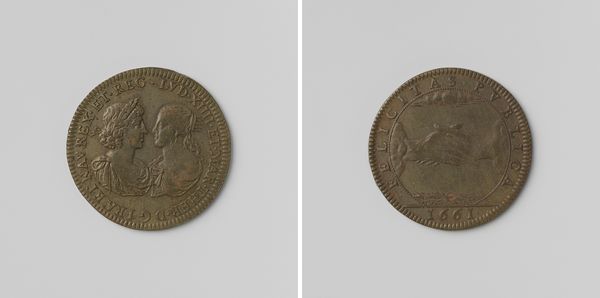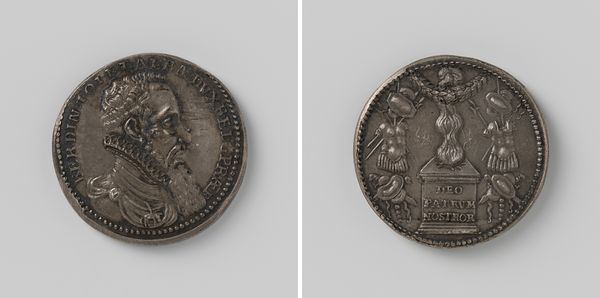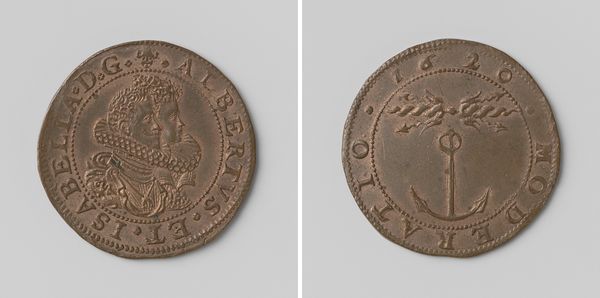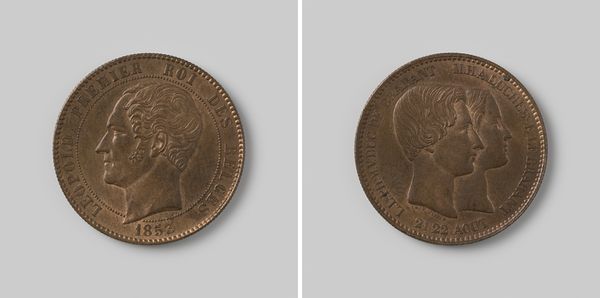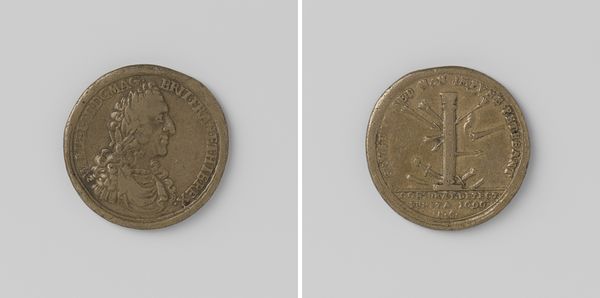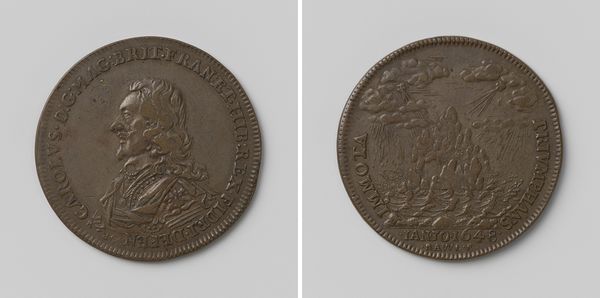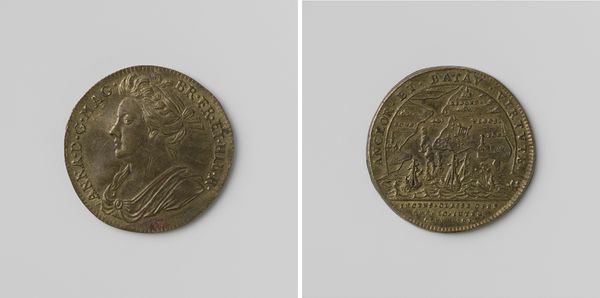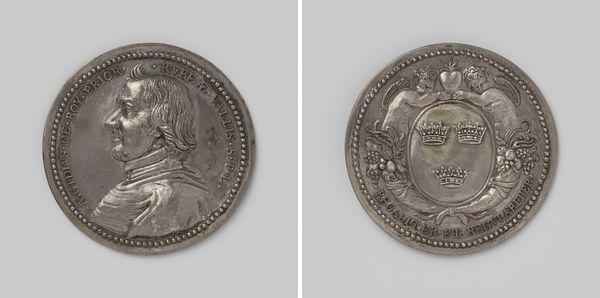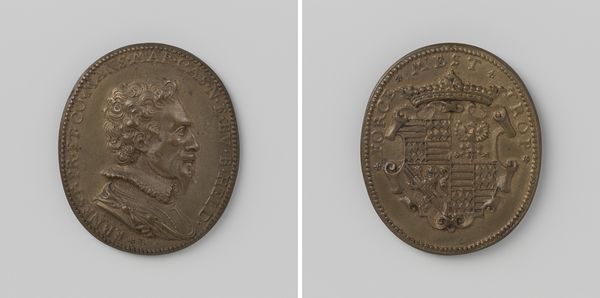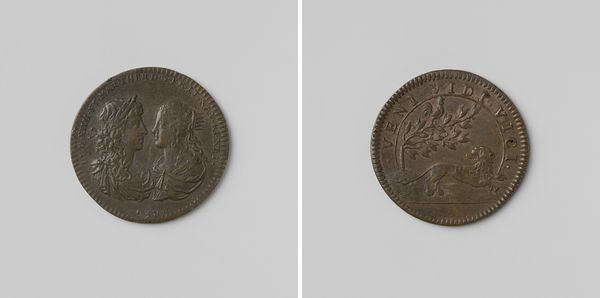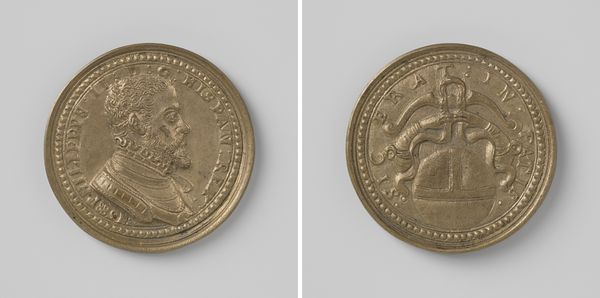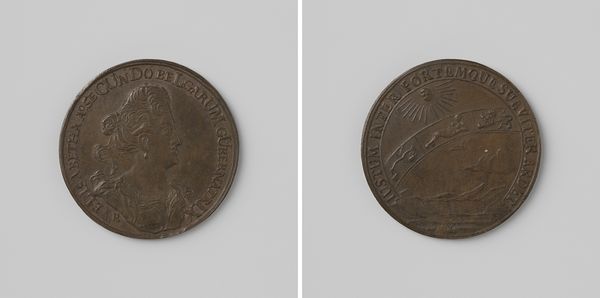
metal, engraving
#
portrait
#
neoclacissism
#
metal
#
history-painting
#
engraving
Dimensions: diameter 3 cm, weight 9.73 gr
Copyright: Rijks Museum: Open Domain
Curator: This is an 1855 ten-centime coin commissioned during the reign of Napoleon III. Jean-Jacques Barre engraved it using metal. It’s a potent little artifact of the Second Empire. Editor: My first impression is how solid and enduring it seems. Coins, by nature, are meant to last, and this one carries the weight of empire. The low relief gives it a worn, familiar feeling, like it's passed through countless hands. Curator: Indeed, Barre, as engraver of the Monnaie de Paris, played a pivotal role in crafting the visual identity of Napoleon III’s regime. The coin participated actively in the everyday economy but also communicated clear messages of power. Note the neoclassical style, referencing a glorious imperial past, seeking legitimacy for this relatively new regime. Editor: Absolutely, and that imagery! The portrait is, of course, a clear statement of leadership, while the eagle on the reverse is a longstanding symbol of France, adapted from Roman imagery. It speaks volumes about ambition and dominion, reminding citizens and perhaps even rival powers of French strength. Notice how even such a small coin still holds so much detail—the feathers of the eagle, the curls of Napoleon's hair. Curator: Consider the context of 1855—Napoleon III was consolidating power after the 1851 coup. Images of him, mass-produced on items like this, saturated French society, creating a cult of personality to reinforce his authority. Currency became a tool of political propaganda, reflecting his ambition to modernize France economically and to rebuild it as a global power. Editor: You can almost trace the echoes of Roman emperors on this object. He's consciously aligning himself with that history and iconography to create a sense of inevitability for his own empire. These symbols were designed for emotional resonance; the populace instinctively recognized what the regime was striving to become through visual shorthands like these. Curator: Exactly. Think, too, about the museum or institutional value a piece like this attains over time, decoupled from its monetary use and considered primarily as cultural heritage. Its interpretation shifts again. Editor: Yes, fascinating to see the shifts in context and symbolic power that an everyday object like a coin can undergo, transcending time and monetary value. Curator: A tangible trace of history, circulating still! Editor: Holding that imperial ambition, now silent but certainly still visible.
Comments
No comments
Be the first to comment and join the conversation on the ultimate creative platform.
